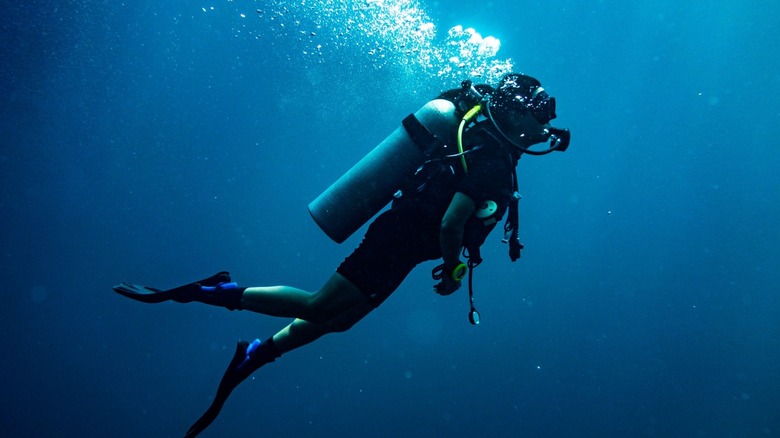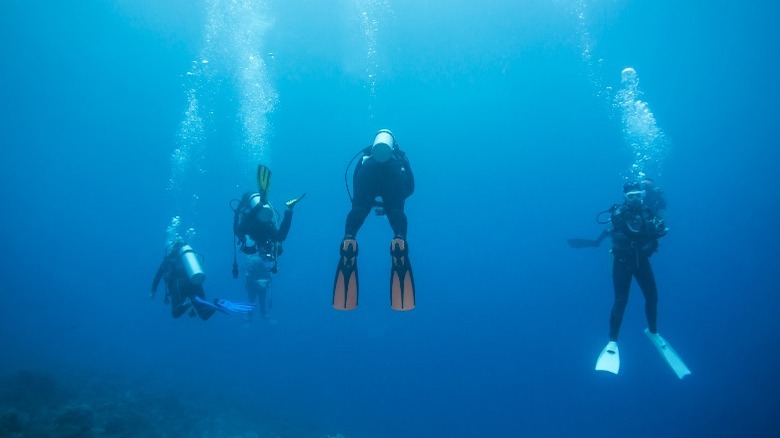What Is Decompression Sickness?
Human beings have both the curiosity and the intellect to explore parts of the world that — at one point in time — we could only imagine going to. The invention of airplanes took humans high into the heavens, while other inventions like submarines took us into the depths of the ocean blue. These wonders are truly incredible, but venturing to great heights and depths does not come without health consequences.
People who travel quickly from a high-pressure atmosphere to a low-pressure atmosphere are at risk of developing decompression sickness, otherwise known as the bends or caisson disease (per Britannica). Healthline explains that decompression sickness happens when nitrogen gas bubbles form in the blood or tissues. Notably, this injury can not only affect scuba divers who breathe compressed air but also pilots operating planes with low pressurization and caisson workers. A caisson is a compressed air box commonly used in underwater engineering (via About Mechanics). According to a 2004 review published in the journal of the Undersea and Hyperbaric Medical Society, the term caisson disease was coined by physician Dr. Andrew Smith during the construction of the Brooklyn Bridge in the 1800s to describe cases of decompression sickness. Here's everything you need to know about this condition.
Decompression sickness: Symptoms, treatment, and prevention
According to Merck Manual, there are two types of decompression sickness. Type 1, commonly called the bends, is less harsh and causes pain in the joints. Sometimes symptoms include fatigue, itching, rash, and swelling of the abdomen, arms, or chest. Type 1 decompression sickness is often called the bends because the gas bubbles affect your joints, causing them to lock up and lose mobility (via Britannica). Type 2 decompression sickness can be life-threatening and affects the nervous system, writes Merck Manual. There is a wide range of symptoms, including — but not limited to — confusion, double vision, difficulty breathing, headache, hearing loss, inability to urinate, numbness, paralysis, vertigo, and weakness. Healthline notes that type 2 decompression sickness is at times called the chokes.
Healthline says that treatments for decompression sickness include breathing pure oxygen for less serious cases, while more serious cases are treated with recompression therapy, otherwise known as hyperbaric oxygen therapy — where you breathe pure oxygen in a pressurized chamber (per Mayo Clinic).
To help prevent decompression sickness, Merck Manual recommends not flying within one day of diving — even if you are on vacation. Some divers try to prevent decompression sickness by minimizing the time spent underwater and the depth of the dive. You can also take decompression stops during the ascent to the surface.


